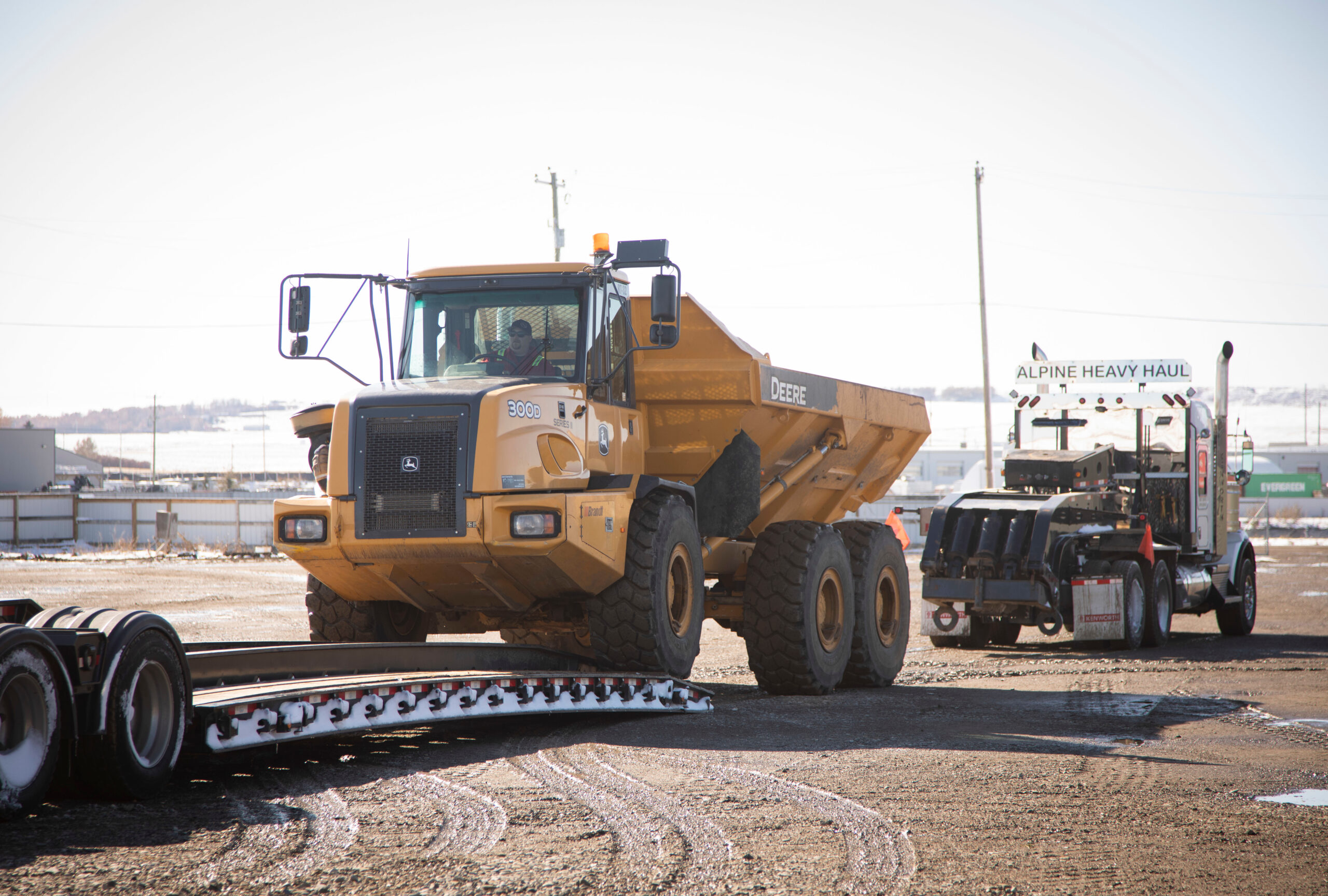What Is the Maximum Weight a Heavy Haul Truck Can Carry?
You just bought a new excavator from an auction in British Columbia, and you’re ready to have it shipped to you in Alberta. How do you go about shipping a large and heavy piece of equipment over such a long distance?
When transporting heavy equipment down highways, it’s necessary to use a specialized trailer pulled by a semi-truck, as there are laws and restrictions regarding oversized load transportation.
How to Choose the Right Equipment
Safety must always be your top priority when choosing equipment for your haul. This will involve becoming familiar with the weight restrictions for trailers. You want to ensure that you are taking all the necessary steps to keep your driver, your shipment, and the other road traffic safe. A significant component in trucking transportation is selecting the proper equipment to accommodate your heavy haul load.
The trailer you choose for your load will affect how the driver will load the equipment, how the load will be secured, and what permits are required to transport the load. Depending on your state or province and the safety permits, some loads may require escort vehicles. To know which trailer best suits your needs, follow the guide below to familiarize yourself with different trailer types.
Types of Trailers
The trailer you choose will highly depend on the specs of your equipment. Several different kinds of trailers are best suited for specific loads. Some trailers are better equipped to handle an oversized load than others, depending on their axle spread and interaxle spacing. Below are some of the more commonly used trailers in heavy hauling. Trusted Dispatch also has an extensive guide on heavy haul trailers here.
You will need to know the weight of your equipment to know which trailer best suits your needs. The amount of weight a trailer can accommodate highly depends on how many axles it has—the more axles a trailer has, the heavier the load it can carry.
- Steer axle: supports the tires at the front of a semi-truck.
- Single axle: supports dual tires.
- Double or tandem axle: two axles side-by-side supporting four wheels.
To abide by safety protocols properly, you must be aware of the axle weight limits of your trailers. Different jurisdictions will have different weight and height regulations.
Flatbed (Step Deck) Trailers
Due to their versatility, flatbed trailers, also known as highboys, are one of the most commonly-used trailers for heavy-duty loads. They are mainly used for transporting loads that are heavy, oversized, and durable. Due to the open and flat body, loading machinery onto it is simple. If you plan on using a flatbed trailer to haul equipment, you must ensure that the equipment can withstand harsh weather conditions such as rain and snow.
Flatbeds can usually accommodate a max weight of 48,000 lbs.
Lowboy Trailers
Lowboy Trailers, also called double-drop trailers, are semi-trailers with two high decks with a lower deck that sits between the gooseneck and the deck before the wheels. While there are different kinds of lowboy trailers, they all serve the same purpose. Unlike standard flatbed trailers, these trailers are designed for transporting tall equipment, such as construction equipment, as the deck sits very close to the ground. These trailers are great for transporting tractors and their attachments.
The maximum weight capacity for these trailers ranges from 43,000 lbs to 58,000 lbs, depending on the number of axles they have.
Removable Gooseneck Trailers (RGNs)
Removable gooseneck trailers can be lowboys or double drops. They are ideal for hauls that are tall and heavy. They have a detachable trailer neck that allows them to detach from the semi-truck. In doing so, the trailer can lower and create a ramp to make loading the equipment from the front easier. They are ideal for long and heavy equipment, such as bulldozers or combine harvesters.
Their maximum weight capacity ranges from 42,000 lbs to 150,000 lbs, depending on the lowboy trailer and the number of axles they have.
Booster Jeeps
Boosters and jeeps provide extra axles to help spread the load over a more extended surface. In doing so, drivers can secure heavier loads and prevent damage, harm, and the breaking of laws. These are usually attached directly to the semi-truck and sometimes at the trailer’s rear end.
Heavy Haul Shipments in North America
Our drivers at Trusted Dispatch will always prioritize safety above all else, and they are familiar with the rules and safety protocols of the road. We ensure that all our drivers are vetted and insured so they can deliver your equipment promptly and safely anywhere in Canada or the United States. Get started today with a free, instant quote.





